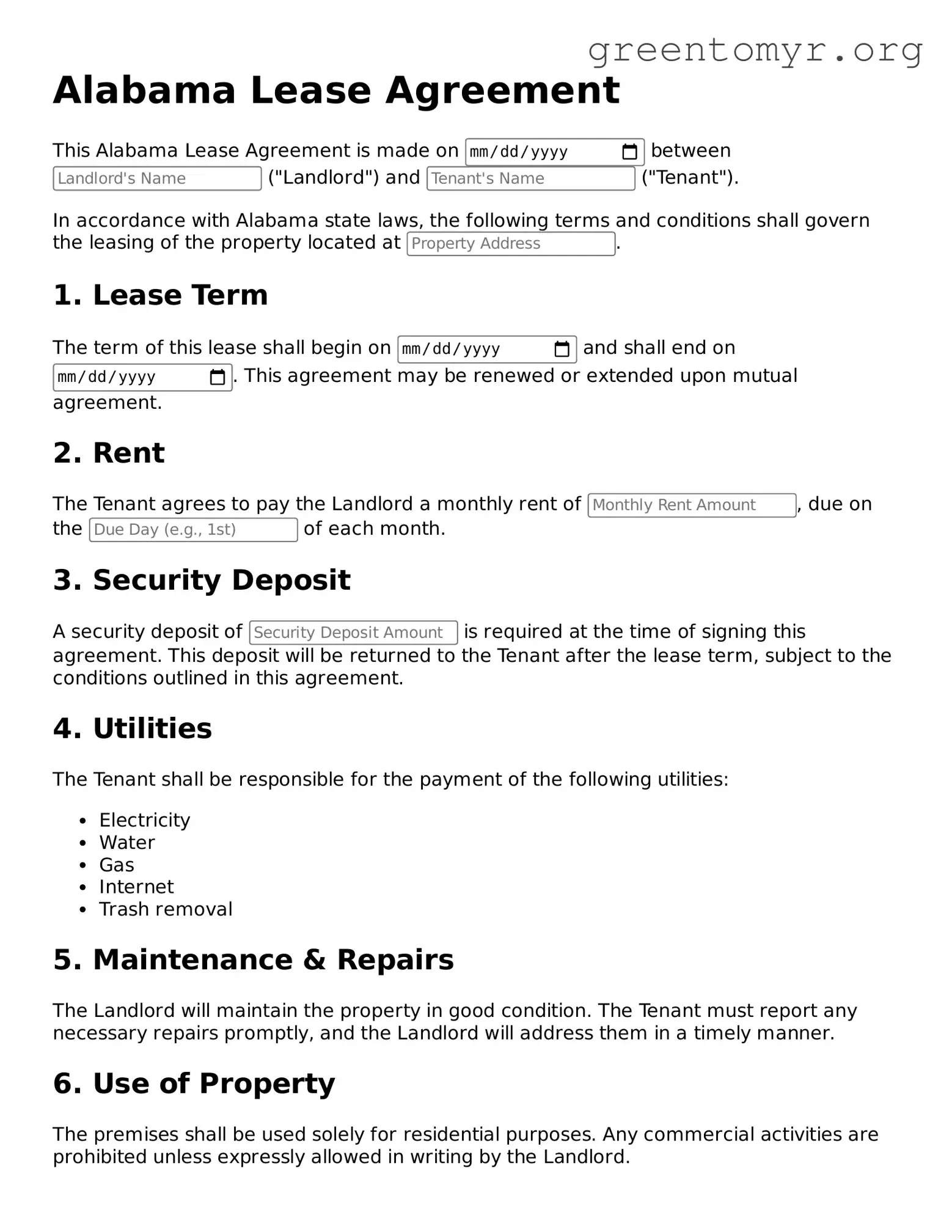Lease Agreement Form for the State of Alabama
An Alabama Lease Agreement is a legal document used to outline the terms of renting a property in Alabama. This agreement establishes the rights and responsibilities of both the landlord and the tenant, ensuring clarity throughout the rental period. For those ready to secure their rental agreement, fill out the form by clicking the button below.
